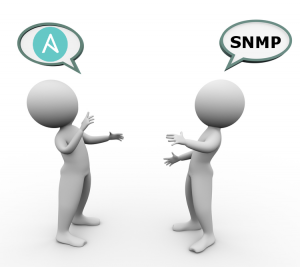REPORT: OpenStack and More – Cloud Management, Orchestration and DevOps
 OpenStack got you down? Get clarity on cloud management and orchestration today with a copy of our report!
OpenStack got you down? Get clarity on cloud management and orchestration today with a copy of our report!
 OpenStack got you down? Get clarity on cloud management and orchestration today with a copy of our report!
OpenStack got you down? Get clarity on cloud management and orchestration today with a copy of our report!
It’s almost time to celebrate my one-year work anniversary with Plexxi, coming up next month. When I began here I set out with a grand vision set on building a simply better network. I’m grateful to the entire Plexxi team for their commitment and hard work to make many of our goals a reality. I believe that today we are better and stronger as a company. We have meaningful industry partnerships like our distribution agreement with Arrow, groundbreaking product developments and more financing to make our goals and growth plans a reality.
Last week I spoke with Chris Talbot, a writer at FierceEnterpriseCommunications and had the opportunity to reflect on my time with Plexxi so far. Chris and I discussed what led me to join Plexxi, why I believe in what we’re doing and why we’re pioneering a new path for networks that is going to lead the industry for years to come.
We are making great strides and I’m excited about the momentum we have going for us right now and what the future holds. You can find Chris’ article, “The Future of Networking is Photonic Underlays” here. Let me know what you think.
The post Continue reading
 The NFV project looks ready to launch by March, Docomo tells the SDN & OpenFlow World Congress.
The NFV project looks ready to launch by March, Docomo tells the SDN & OpenFlow World Congress.
 |
| Dawnray SFP+ module. Photo found here. |

Knowing the members of our Ansible community is important to us, and we want you to get to know the members of our team in (and outside of!) the Ansible office. Stay tuned to the blog to learn more about the people who are helping to bring Ansible to life.
 |
This week we're happy to introduce you to Peter Sprygada, who recently joined Ansible to tackle all things networking. Prior to joining us at Ansible, Peter built a long career building and operating next generation network infrastructures and most recently ran the EOS+ CS team at Arista focusing on the integration of network operations with DevOps methodologies. |
What’s your role at Ansible?
Mostly my days revolve around working closely with customers, partners and the fantastic Ansible community to bring more robust support for networking devices into Ansible and Ansible Tower. This includes applying Ansible to help evolve DevOps methodologies to solve problems associated with running network operations teams.
What exciting Ansible networking projects can you tell us about?
To start, we have been working closely with our network partners to transition many of the great modules that have been available in the wild and make them available to Continue reading
 Until there is a universal standard which states how to access network devices I believe SNMP is the best option when it comes to determining what a device actually is. While SNMP’s glory days might be long gone, if there in fact were any. There are still some instances where SNMP is more handy than the modern APIs we have now. All network devices respond in the same way to SNMP queries. This can be compared to a REST API where you have to know the URL of the API before you can target a device. Even with SSH which is also a standard the implementation differs between various vendors, while this doesn’t matter if you are connecting to the device manually it does if you are using a script. Looking at Netmiko a Python library for SSH, you have to specify device vendor and class when you connect. This is because SSH doesn’t work the same with Cisco devices, compared to HP devices, as prompts and paging work differently. However with SNMP it always works the same, sure all vendors have specific MIBs that they use. But general queries for standard MIBs work the same. Using a standard MIB Continue reading
Until there is a universal standard which states how to access network devices I believe SNMP is the best option when it comes to determining what a device actually is. While SNMP’s glory days might be long gone, if there in fact were any. There are still some instances where SNMP is more handy than the modern APIs we have now. All network devices respond in the same way to SNMP queries. This can be compared to a REST API where you have to know the URL of the API before you can target a device. Even with SSH which is also a standard the implementation differs between various vendors, while this doesn’t matter if you are connecting to the device manually it does if you are using a script. Looking at Netmiko a Python library for SSH, you have to specify device vendor and class when you connect. This is because SSH doesn’t work the same with Cisco devices, compared to HP devices, as prompts and paging work differently. However with SNMP it always works the same, sure all vendors have specific MIBs that they use. But general queries for standard MIBs work the same. Using a standard MIB Continue reading
 SDxCentral is delighted to reveal the new NEC/NetCracker channel! Visit the NEC/NetCracker channel to learn more about the partners's latest solutions for the network virtualization and SDN space.
SDxCentral is delighted to reveal the new NEC/NetCracker channel! Visit the NEC/NetCracker channel to learn more about the partners's latest solutions for the network virtualization and SDN space.

I would normally place worth reading items in the right column, Geoff has written a six part series about the open Internet that’s worth reading. I’ve put links to each piece here.
Thoughts on the Open Internet – Part 1: What Is “Open Internet”
Thoughts on the Open Internet – Part 2: The Where and How of “Internet Fragmentation”
Thoughts on the Open Internet – Part 3: Local Filtering and Blocking
Thoughts on the Open Internet – Part 4: Locality and Interdependence
Thoughts on the Open Internet – Part 5: Security
Thoughts on the Open Internet – Part 6: Final Thoughts
The post Worth Reading: Thoughts on the Open Internet appeared first on 'net work.

The post Worth Reading: Open Switch Software appeared first on 'net work.

The post HL: The Degree or the Certification? appeared first on 'net work.
While attending an influencers event at Intel in Portland, Oregon I got into a discussion with Kelsey Hightower @kelseyhightower and Keith Townsend @ctoadvisor on the nature of Docker networking and its plugin architecture.
The post PQ Show 59 – Docker Network Plugin Architecture appeared first on Packet Pushers.
![]() Service providers are starting to embrace container technology to deliver more dynamic, distributed applications
Service providers are starting to embrace container technology to deliver more dynamic, distributed applications
 Until there is a universal standard which states how to access network devices I believe SNMP is the best option when it comes to determining what a device actually is. While SNMP’s glory days might be long gone, if there in fact were any. There are still some instances where SNMP is more handy than the modern APIs we have now. All network devices respond in the same way to SNMP queries. This can be compared to a REST API where you have to know the URL of the API before you can target a device. Even with SSH which is also a standard the implementation differs between various vendors, while this doesn’t matter if you are connecting to the device manually it does if you are using a script. Looking at Netmiko a Python library for SSH, you have to specify device vendor and class when you connect. This is because SSH doesn’t work the same with Cisco devices, compared to HP devices, as prompts and paging work differently. However with SNMP it always works the same, sure all vendors have specific MIBs that they use. But general queries for standard MIBs work the same. Using a standard MIB it’s possible to identify the manufacturer of a device and often it’s version. Continue reading
Until there is a universal standard which states how to access network devices I believe SNMP is the best option when it comes to determining what a device actually is. While SNMP’s glory days might be long gone, if there in fact were any. There are still some instances where SNMP is more handy than the modern APIs we have now. All network devices respond in the same way to SNMP queries. This can be compared to a REST API where you have to know the URL of the API before you can target a device. Even with SSH which is also a standard the implementation differs between various vendors, while this doesn’t matter if you are connecting to the device manually it does if you are using a script. Looking at Netmiko a Python library for SSH, you have to specify device vendor and class when you connect. This is because SSH doesn’t work the same with Cisco devices, compared to HP devices, as prompts and paging work differently. However with SNMP it always works the same, sure all vendors have specific MIBs that they use. But general queries for standard MIBs work the same. Using a standard MIB it’s possible to identify the manufacturer of a device and often it’s version. Continue reading

“The future of the WAN is NOT . . . a router.”
These bold words were spoken by Riverbed’s Josh Dobies in a presentation to the delegates at Networking Field Day 10 this August, as a lead in to the first public announcement of “Project Tiger.”
Riverbed explained that the SteelHead appliances perform WAN optimization in sites with highly contended bandwidth. The SteelFusion appliances offer both “hyperconverged infrastructure” and WAN optimization. For sites that have plenty of bandwidth, however, there’s no Riverbed product you can put there and that–for Riverbed at least–is a problem. Riverbed’s proposed solution? Ironically, it’s an appliance that can act as a WAN router, but with some rather unusual features.
The headline features of Project Tiger as I see it, are:
Surprisingly absent from that list, however, is WAN Optimization. Despite being Riverbed’s core competency, this is not a feature of the Project Tiger appliance. Because Continue reading